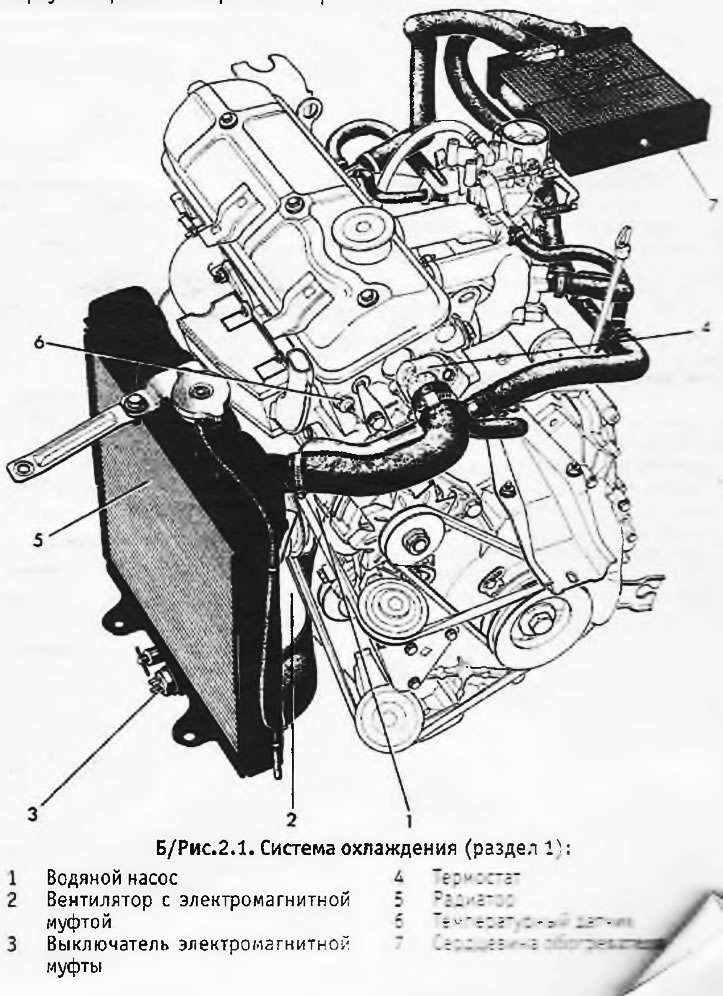Cold coolant from the bottom of the radiator is pumped into the water jacket passages of the block and cylinder head, where it absorbs heat from the combustion chambers and moving parts of the engine, then flows to the top of the radiator. The liquid passing through the radiator is cooled by air flow (arising from the movement of the machine and, when necessary, due to the fan),.and the process starts again.
A thermostat is installed at the cooling system outlet connecting the engine to the upper radiator hose to speed up the warm-up of the engine and maintain it at the correct operating temperature. When the coolant is cold, the thermostat is closed and the coolant circulates through the engine's water jacket, returning back through the bypass. As the fluid temperature rises, the thermostat opens and fluid begins to flow into the radiator.
The system is pressurized to lower the boiling point of the coolant. This ensures optimum engine operating temperature and reduces the amount of coolant needed for cooling.
Hot coolant enters the car's interior heater, and also gives off heat to the carburetor and intake manifold, which facilitates the process of transferring fuel to a vapor state.
The fan pulley has an electromagnetic drive, which turns on only when the coolant temperature is high. Due to this design, the fan only operates when it is really needed, resulting in reduced noise levels and energy consumption.

Cooling system on XU engines
1. The cooling system on XU engines differs from the cooling system used on XL and XR engines in three main ways:
- A. The system is closed (air from the radiator is released into the expansion tank, and not into the atmosphere).
- b. The water pump is driven by the camshaft drive belt.
- V. The radiator cooling fan is driven by an electric motor.
2. There are also slight differences in hose routing and thermostat placement. The basic procedures for working with the cooling system remained unchanged.
